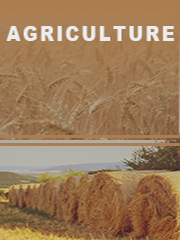The global Smart Agriculture market was valued at US$ 4153.6 million in 2022 and is projected to reach US$ 7684.6 million by 2029, at a CAGR of 9.2% during the forecast period. The influence of COVID-19 and the Russia-Ukraine War were considered while estimating market sizes.
Smart agriculture, allows farmers to maximize yields using minimal resources such as water, fertilizer, and seeds. By deploying sensors and mapping fields, farmers can begin to understand their crops at a micro scale, conserve resources, and reduce impacts on the environment. Smart agriculture has roots going back to the 1980s when Global Positioning System (GPS) capability became accessible for civilian use. Once farmers were able to accurately map their crop fields, they could monitor and apply fertilizer and weed treatments only to areas that required it. During the 1990s, early precision agriculture users adopted crop yield monitoring to generate fertilizer and pH correction recommendations. As more variables could be measured and entered into a crop model, more accurate recommendations for fertilizer application, watering, and even peak yield harvesting, could be made. A number of sensing technologies are used in precision agriculture, providing data that helps farmers monitor and optimize crops, as well as adapt to changing environmental factors. This report mainly covers the Smart agriculture senor and robot and other device. software and other service solution is not covered.
This report aims to provide a comprehensive presentation of the global market for Smart Agriculture, with both quantitative and qualitative analysis, to help readers develop business/growth strategies, assess the market competitive situation, analyze their position in the current marketplace, and make informed business decisions regarding Smart Agriculture. This report contains market size and forecasts of Smart Agriculture in global, including the following market information:
Global Smart Agriculture Market Revenue, 2018-2023, 2024-2029, ($ millions)
Global top five companies in 2022 (%)
The industry's leading producers are Texas Instruments, AGCO Corporation and GEA Farm Technologies, with revenue ratios of 8.10%, 11.00% and 2.67%, respectively, in 2019.
We surveyed the Smart Agriculture companies, and industry experts on this industry, involving the revenue, demand, product type, recent developments and plans, industry trends, drivers, challenges, obstacles, and potential risks.
Total Market by Segment:
Global Smart Agriculture Market, by Type, 2018-2023, 2024-2029 ($ millions)
Global Smart Agriculture Market Segment Percentages, by Type, 2022 (%)
- Smart Agriculture Sensor
- Smart Agriculture Robot
- Agricultural Drone
- Others
Global Smart Agriculture Market, by Application, 2018-2023, 2024-2029 ($ millions)
Global Smart Agriculture Market Segment Percentages, by Application, 2022 (%)
- Planting Agriculture
- Horticulture
- Livestock Monitoring
- Others
Global Smart Agriculture Market, By Region and Country, 2018-2023, 2024-2029 ($ Millions)
Global Smart Agriculture Market Segment Percentages, By Region and Country, 2022 (%)
- North America
- US
- Canada
- Mexico
- Europe
- Germany
- France
- U.K.
- Italy
- Russia
- Nordic Countries
- Benelux
- Rest of Europe
- Asia
- China
- Japan
- South Korea
- Southeast Asia
- India
- Rest of Asia
- South America
- Brazil
- Argentina
- Rest of South America
- Middle East & Africa
- Turkey
- Israel
- Saudi Arabia
- UAE
- Rest of Middle East & Africa
Competitor Analysis
The report also provides analysis of leading market participants including:
- Key companies Smart Agriculture revenues in global market, 2018-2023 (estimated), ($ millions)
- Key companies Smart Agriculture revenues share in global market, 2022 (%)
Further, the report presents profiles of competitors in the market, key players include:
- Texas Instruments
- John Deere
- AKVA Group
- Robotics Plus
- AGCO Corporation
- GEA Farm Technologies
- CropX
- Trimble Inc
- Yamaha
- Lely
- DeLaval
- YANMAR
- FarmBot
- Raven Industries
- AG Leader Technology
- TOPCON Positioning Systems
- AG Junction
- Allflex
- AeroFarms
- Osram Licht AG
- XAG
- Kebai Science
- Shenzhen High-tech New Agriculture Technology
Outline of Major Chapters:
- Chapter 1: Introduces the definition of Smart Agriculture, market overview.
- Chapter 2: Global Smart Agriculture market size in revenue.
- Chapter 3: Detailed analysis of Smart Agriculture company competitive landscape, revenue and market share, latest development plan, merger, and acquisition information, etc.
- Chapter 4: Provides the analysis of various market segments by type, covering the market size and development potential of each market segment, to help readers find the blue ocean market in different market segments.
- Chapter 5: Provides the analysis of various market segments by application, covering the market size and development potential of each market segment, to help readers find the blue ocean market in different downstream markets.
- Chapter 6: Sales of Smart Agriculture in regional level and country level. It provides a quantitative analysis of the market size and development potential of each region and its main countries and introduces the market development, future development prospects, market space of each country in the world.
- Chapter 7: Provides profiles of key players, introducing the basic situation of the main companies in the market in detail, including product sales, revenue, price, gross margin, product introduction, recent development, etc.
- Chapter 8: The main points and conclusions of the report.
